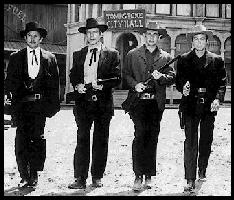 When a Nebraska state legislator introduced a bill the other day that would open the way for teachers and administrators in schools in the state, including universities, to carry concealed guns, I’m not sure he fully appreciated how visionary the measure really was. It is, without doubt, one of the most far-sighted, politically astute and economically savvy pieces of legislation ever to be floated in Lincoln, Neb.
When a Nebraska state legislator introduced a bill the other day that would open the way for teachers and administrators in schools in the state, including universities, to carry concealed guns, I’m not sure he fully appreciated how visionary the measure really was. It is, without doubt, one of the most far-sighted, politically astute and economically savvy pieces of legislation ever to be floated in Lincoln, Neb.
This bill, sure to be resisted by those blinkered pantywaists in Omaha and the university community in Lincoln, could transform the state’s economy and put Nebraska on the global map. It ought to be cheered from the Iowa border to Colorado. Let’s examine the implications.
First, school districts and the university are straining under budget pressures these days. If teachers and administrators could tuck Glocks under their vests, legions of security guards could be let go. Indeed, the campus police force at UNL and every other university campus in the state could be disbanded. When every academic is packing, criminals are sure to stay out of the classrooms, dormitories and poorly lit passageways traversed by coeds late at night. Think of the massive and instantaneous budget impact. Billion-dollar state budget shortfall? Gone in a flash of gunpowder!
Consider, too, the intellectual and financial benefits. If freshly armed professors chose to settle their disputes like men, instead of in those insufferably genteel discussions at faculty meetings, we’d have a lot fewer faculty members after a while. Odds are, too, that the survivors would be the brainier right-thinking types. Many of the rest are probably tenured, so this move would deal with that problem nicely, too. We’d save a bundle on inflated salaries and wind up with quick-thinking profs who have their heads on screwed on properly.
Sure, there could be some minor problems. Teachers drawing down on one another outside crowded classrooms or in faculty dining areas might be a bit disruptive, at times messy. But students adapt to just about anything and we do have janitors for a reason. Let’s not let such small issues hobble us.
Politically, moreover, this is a brilliant move. A bill like this forces legislators to put their convictions out on display for everyone to see. Not sure if your legislator is a Second Amendment champion? This’ll out him. And this way, we could rid ourselves of the overeducated urbanites who hide behind those wrong-headed complaints about gun violence and crime. You know, many of them are following secret agendas inspired by Moscow and Beijing to disarm Americans anyway. This bill will eventually force them out as voters see their true colors.
The measure is also an economic stroke of genius. When Nebraska becomes a place where real Americans can stride around with holsters heavy and hearts full, more Americans will want to visit. Eventually, many will move here. Our kind of people will desert those decadent and dangerous cities on the coasts and flock to the rolling prairie, where they can fire at will at anything that disturbs them. Our population will swell, first with tourists and then with permanent newcomers.
Don’t underestimate those tourists, either. This is Nebraska, after all – a place where six-shooters on both hips were once commonplace. With no trouble at all, we could recreate the glory days of the Nebraska Territory. People would wander the streets even in places like Lincoln looking for low-down varmints to eradicate. Our bars could reinstall those nifty swinging panels on their front doors. Men could play poker, curse, drink and spit a lot while busty women saunter around in fluffy skirts. Think of the possibilities of evoking a time when real freedom existed in the state and our country, when we didn’t rely on slick lawyers and worry about Miranda Rights and such.
What, you say, this is supposed to be the 21st Century? Gunfights have gone the way of player pianos. Now, we have laws and police and courts and such. Poppycock. It’s weaponry we all need. The bad guys are packing, after all, and the only way for decent folk to counter that is to carry even bigger guns. Let’s hope our legislators don’t stop at concealed handguns, but let us have assault weapons in our elementary, high schools and colleges. With any luck, someone clever on campus could develop a concealable bazooka – why are we paying those academics anyway, if not to come up with nifty new things? Indeed, Nebraska could become a Silicon Valley for weapons-makers.
But, really, what we should hope for is the ability to drive tanks to campus. Legalize armored personnel carriers and you’ll really scare off the bad element. They would also guarantee all of us right-thinking folks good parking spaces.
This bill, put forward in the wake of a tragic high school shooting by a mentally troubled student, is certainly evidence that some legislative leaders in the state have been bred and reared right – isn’t it? Then again, it could be a sign of maybe a little too much inbreeding in somebody’s family.




